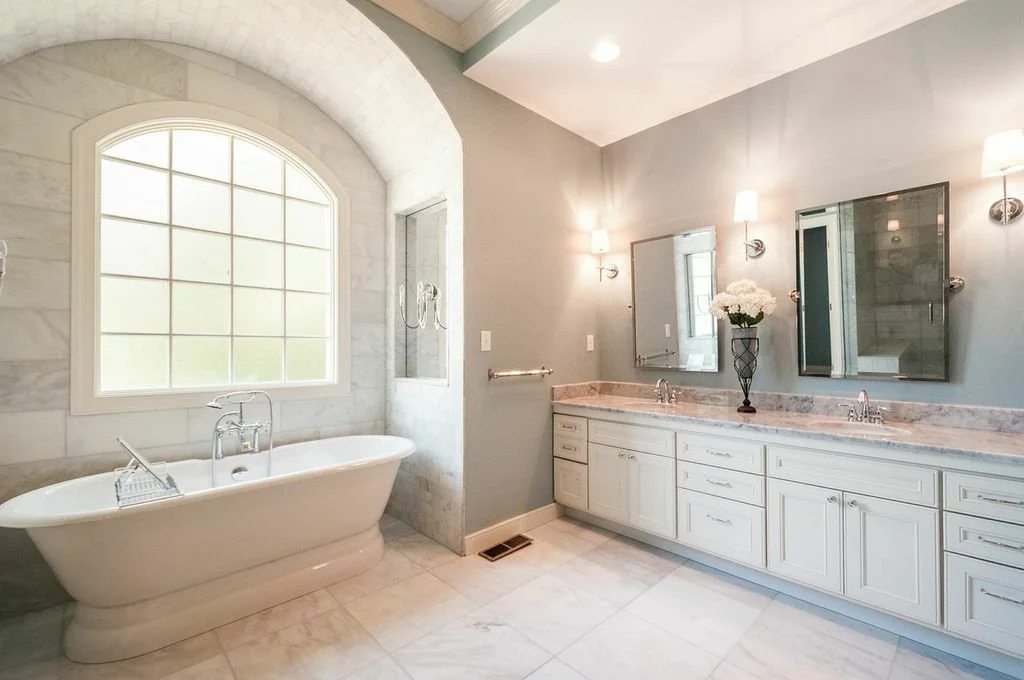The Richmond Times Dispatch Just Listed Their Top Picks for the 10 Most Romantic Restaurants in Richmond
/Do you agree with their choices?
Article Authored by Colleen Curran
Just in time for Valentine's Day, here are 10 romantic restaurants worth checking out around town. Some are new additions to the Richmond dining scene, while others are wine-and-dine standbys.
Most romantic Italian: Lost Letter
Move over La Grotta, there’s a new must-visit authentic Italian restaurant in town. Lost Letter, an easy Italian restaurant from star chefs Patrick Phelan and Megan Fitzroy Phelan, is a love letter to northern Italy with homemade pasta, delicate antipasti and meat and fish dishes (prices range $18-$34) at 2939 W. Clay St. in Scott’s Addition.
Classic romantic upscale: Lemaire
If you’re saving for a special occasion or want to make a impression, Lemaire restaurant in The Jefferson Hotel is always a classic choice. From the sumptuous surroundings to the fine dining dishes, Lemaire has been serving upscale dining for over 20 years. 101 W. Franklin St.
Most romantic wine bar: Echelon Urban Wine Bar
If you’re a wine lover, Echelon Urban Wine Bar in Shockoe Slip is the way to go. With soft seating, lighting and a curated wine selection paired with chef-driven dishes, it’s a luxurious experience. Echelon offers wine by glass, bottle or wine flights ($20-$45) and a menu of farm-to-table tapas-style small plates ($12-$28). For Valentine’s Day, Echelon is offering a four-course prix fixe menu with an optional wine pairing. $85 per person. 1209 E. Cary St.
Most romantic new steakhouse: Perry's Steakhouse & Grille
If you want to impress your date, snag a spot at the newly opened Perry’s Steakhouse & Grille in Short Pump. Perry’s “famous seven-finger pork chop” is butchered in-house, seasoned, cured and roasted on a rotisserie with pecan wood. I loved the four-season patio with gas fireplaces and the Bourbon Bloom cocktail ($16). Be prepared to spend; main dishes start at $35 to $65. 11788 W. Broad St.
Most romantic heated patio: Jardin
Jardin's outdoor wine garden is a winter respite, complete with heaters, twinkling lights and 150 varieties of wine. Jardin is the perfect spot for a glass (or bottle of wine) paired with charcuterie boards, small plate and sweets like locally made macarons and cookies. For Valentine's Day, Jardin will be doing a three-course dinner service for $29, wine pairing $25, reservations required.
Most intimate: 21 Spoons
Tucked away into an unassuming strip mall in Midlothian, Ann Butler's intimate 21 Spoons has become a local gem. Last year, the tiny restaurant with 14 tables was named "Best Locally Owned Restaurant in Virginia" by Southern Living.
Everything at 21 Spoons is made in-house, from the salad dressings to the bread, and the menu changes based on what is available and in-season. Recent menu highlights include wild rockfish with ratatouille and buerre blanc ($28) and filet mignon with shakshuka butter, parmesan truffle potato cake and creamed greens ($46). Fully booked for Valentine's Day. 13568 Waterford Place, Midlothian.
Most romantic Southern: Lillie Pearl
Chef Mike Lindsey’s flagship restaurant in downtown Richmond is named after his grandmother and serves Southern comfort fare with an upscale twist, such as the addition of sweet lobster meat to the shrimp and grits ($30). My personal favorites are the fried brussel sprouts ($11) and peach cobbler bread pudding ($8). Other dishes like the obe ata braised lamb shank ($30, pictured) draw on the West African roots of Southern cuisine with fork-tender lamb and a Nigerian red pepper-and-tomato sauce. 416 E. Grace St.
Most romantic Chinese cocktail house: And Dim Sum
And Dim Sum opened in the former Max’s on Broad spot in downtown Richmond late last year.
With its hot pink walls and Instagram-worthy bathrooms, And Dim Sum is a super fun night out on the town with shareable dim sum dishes, steamer baskets and trendy cocktails such as the tom yum yum ($13), with Haku vodka, Cruzan coconut, lemon, ginger, chili pepper, and lemongrass. Dishes run from $6 for small bites to $18 for larger dishes. 305 Brook Road.
Most romantic ambiance and double entrendre: L'Opossum
L'Opossum in Oregon Hill regularly lands on "most romantic" and "top restaurant" lists for a reason. With its dark, kitschy atmosphere and tongue-in-cheek dishes — "Vegan Orgy on Texas Beach" anyone? — L'Opossum has become a dining hotspot in Richmond with reservations booked weeks, sometimes months, in advance. Fully booked for Valentine's Day. 626 China St.
Most romantic cheap date: Bamboo Cafe
Where else can you get a filet mignon with sauteed mushrooms and mashed potatoes for $28? Bamboo Cafe, that's where. A Richmond mainstay for 50 years, Bamboo Cafe has a timeless charm with its pressed tin ceiling, reliable food, great service and strong drinks. Plus the tiny booths with vintage lights are the epitome of Fan romance. 1 S. Mulberry St.



